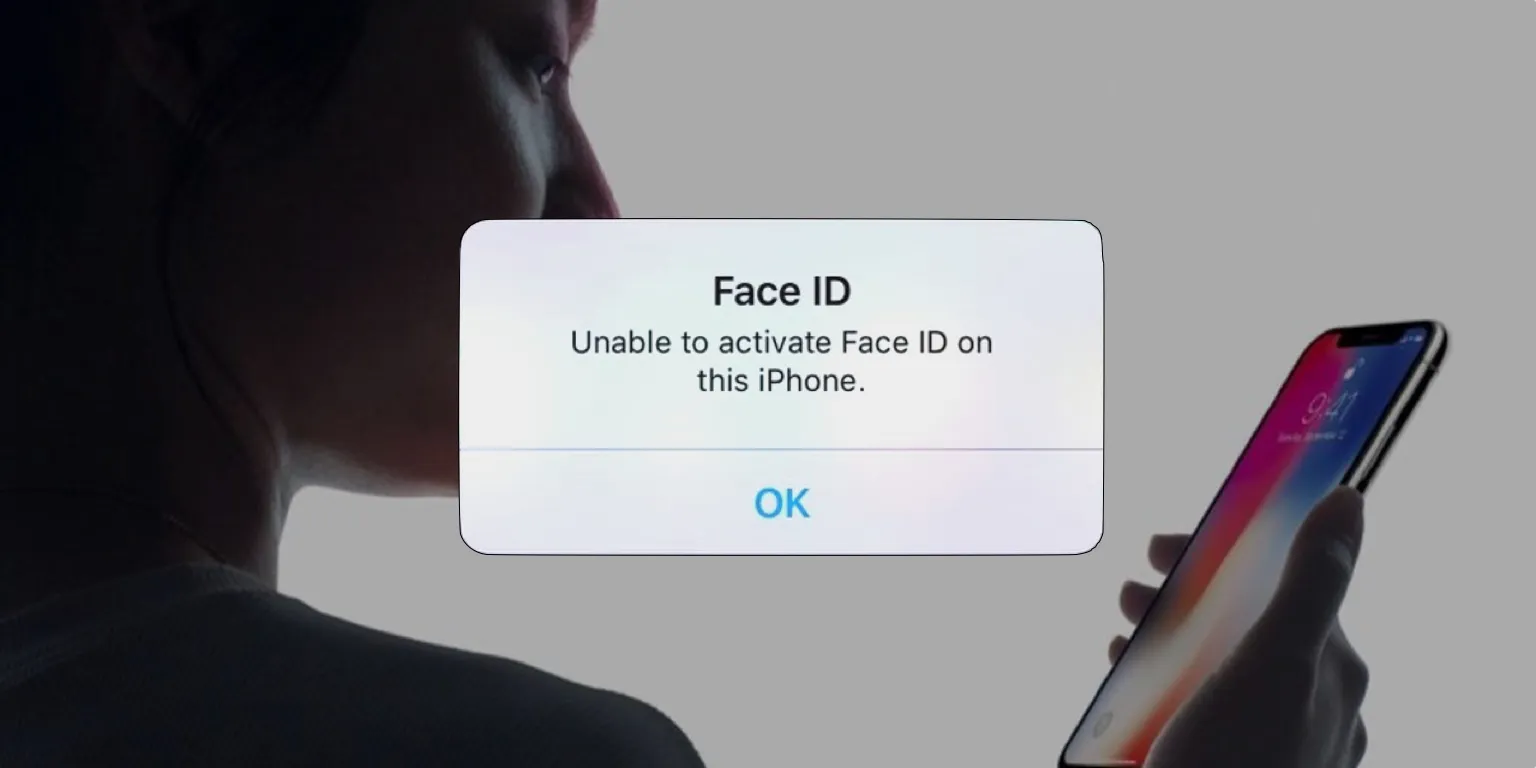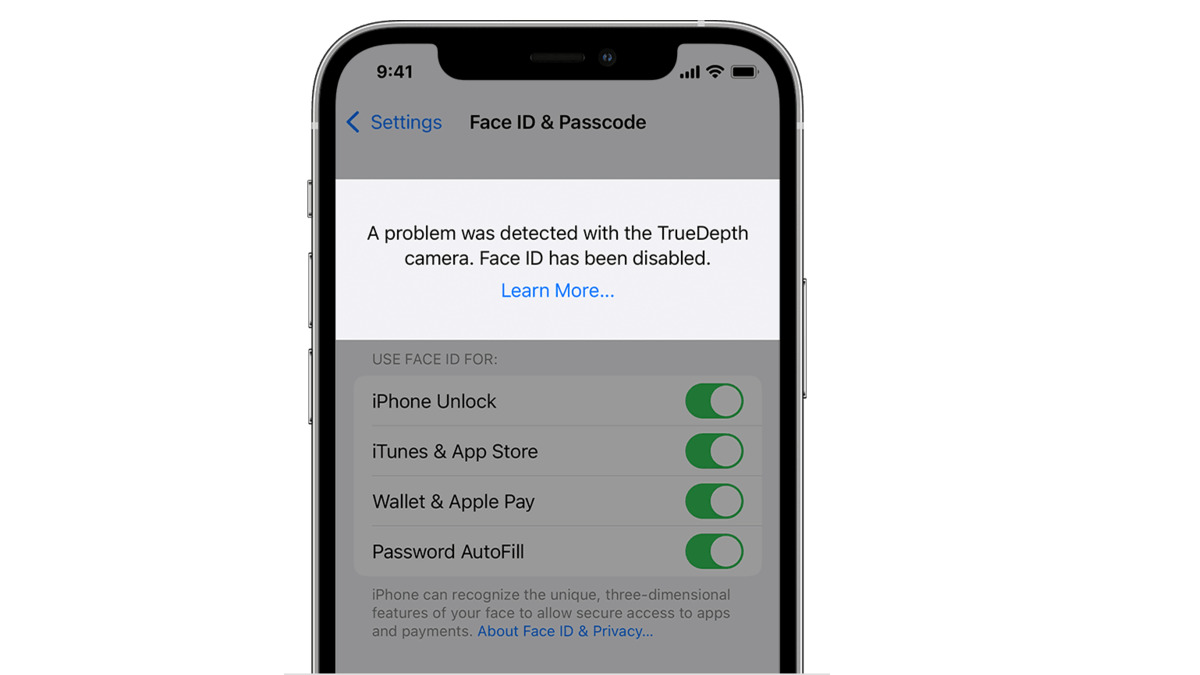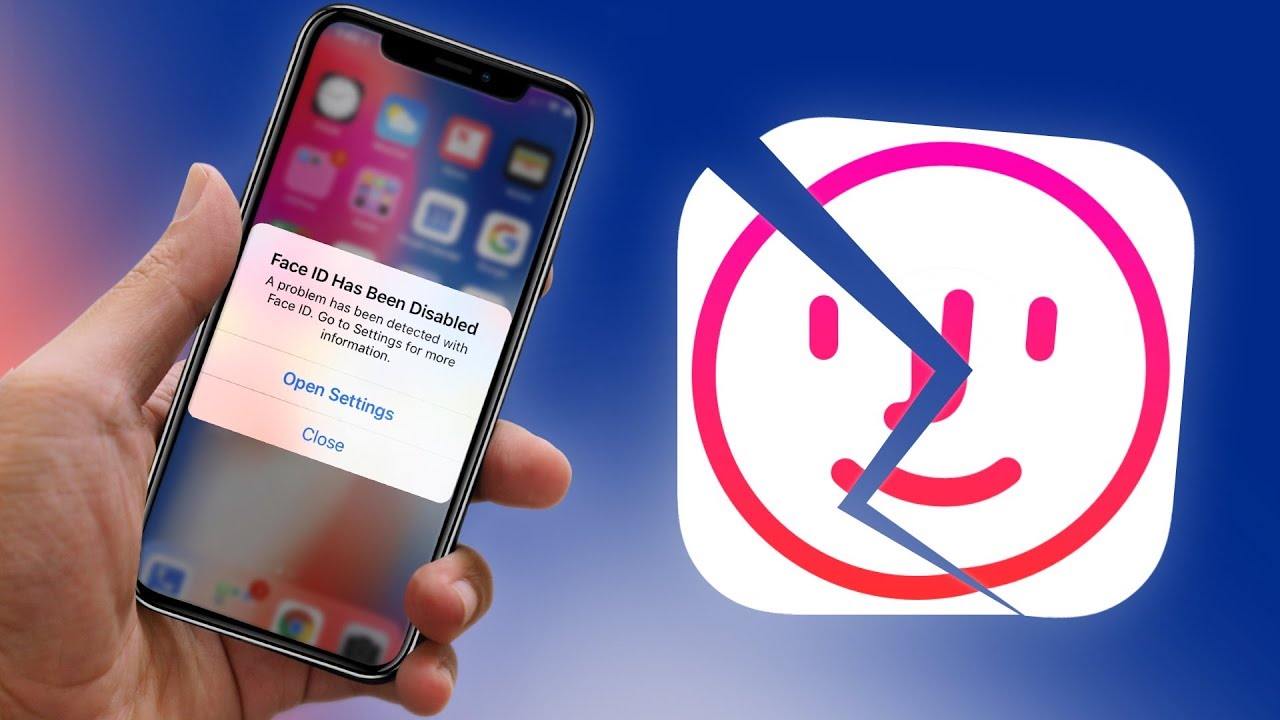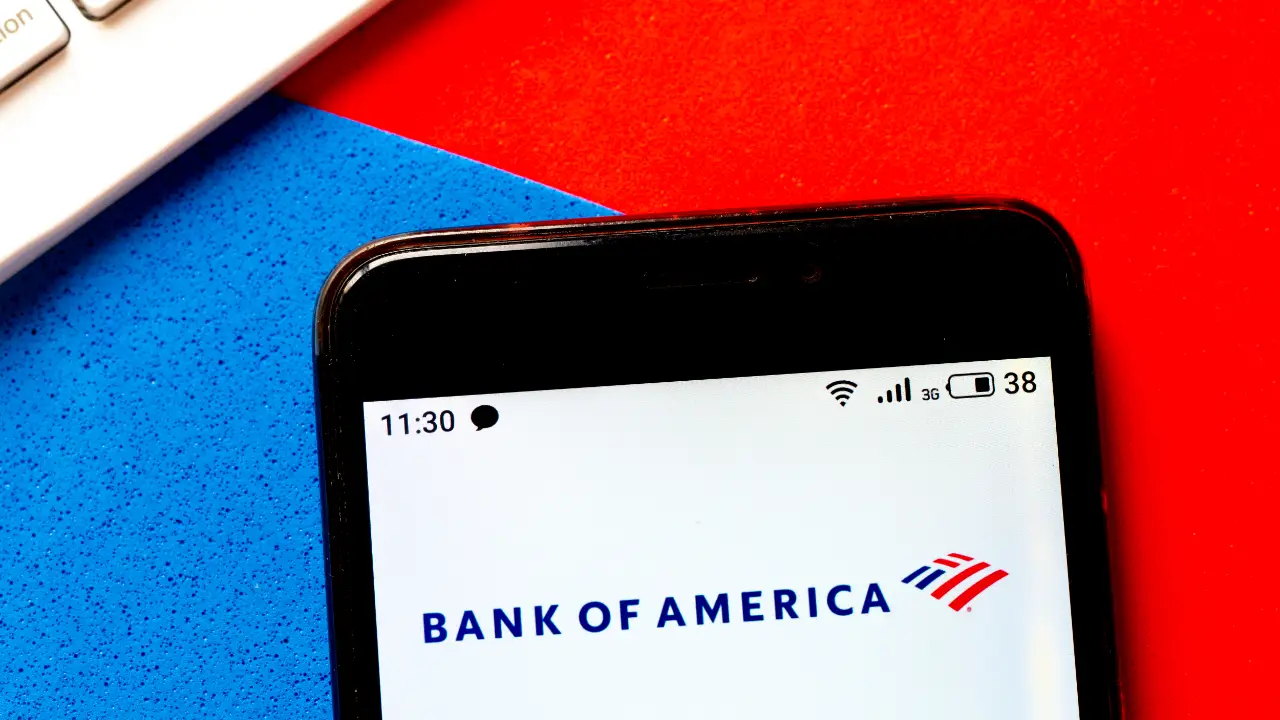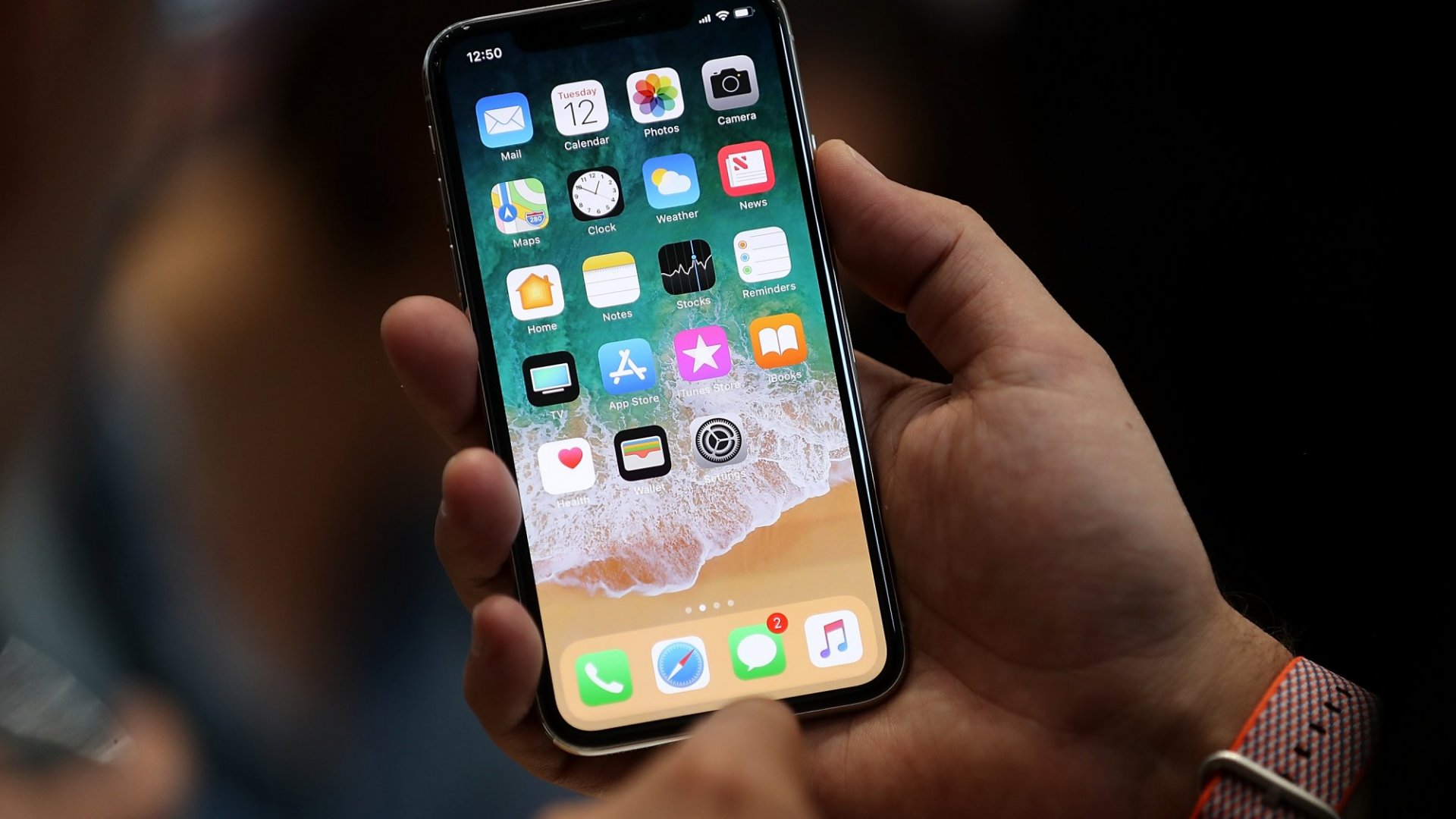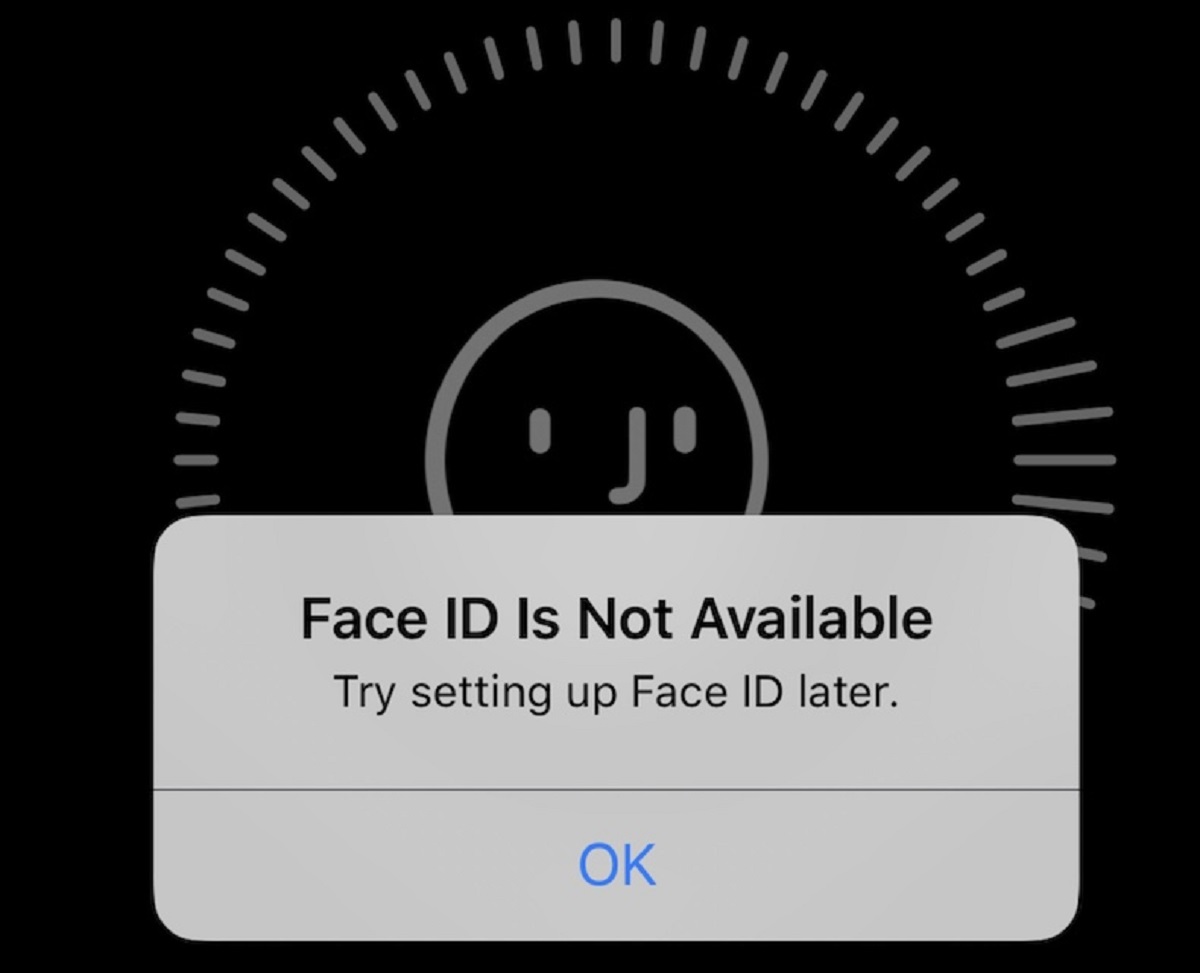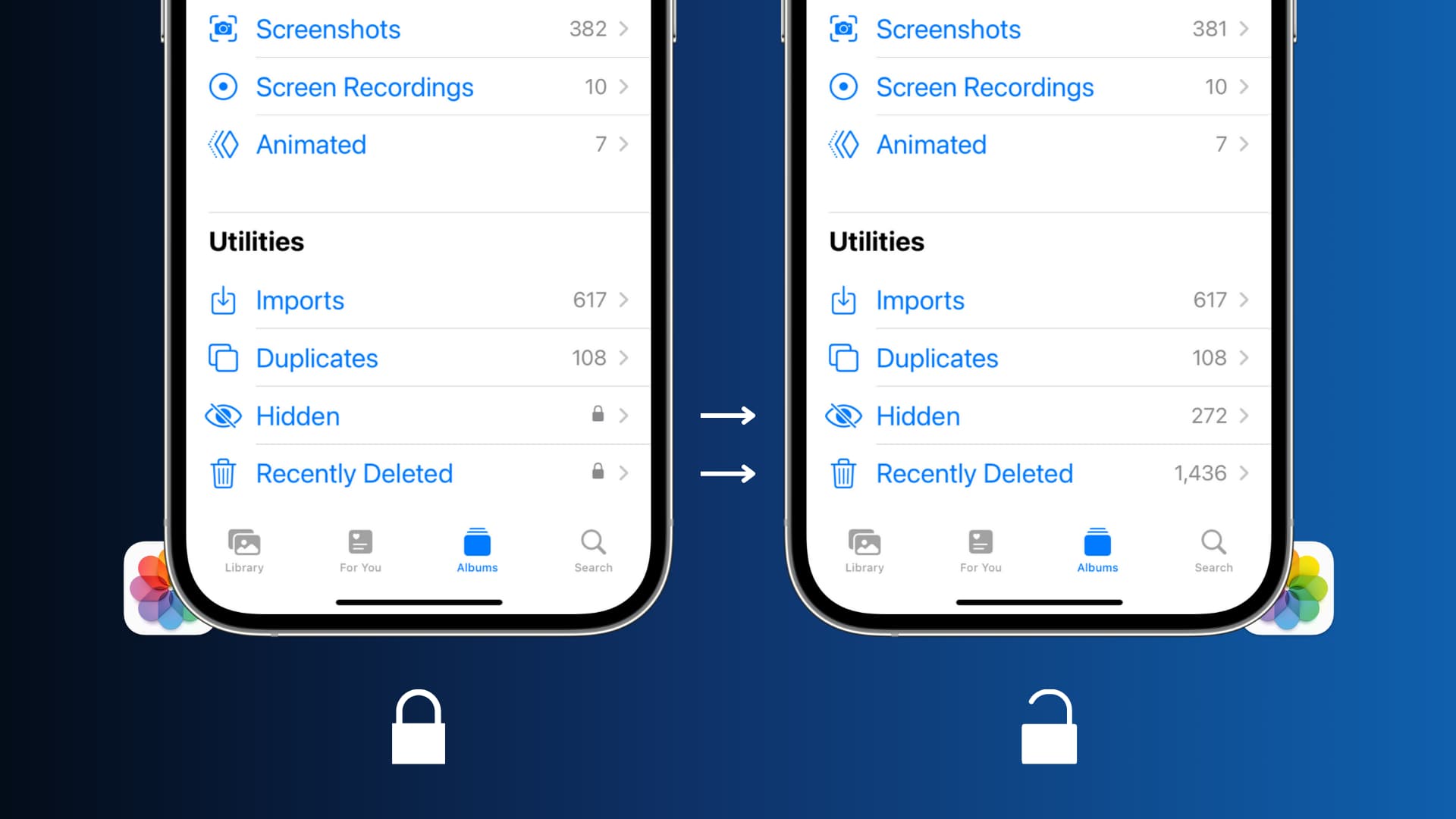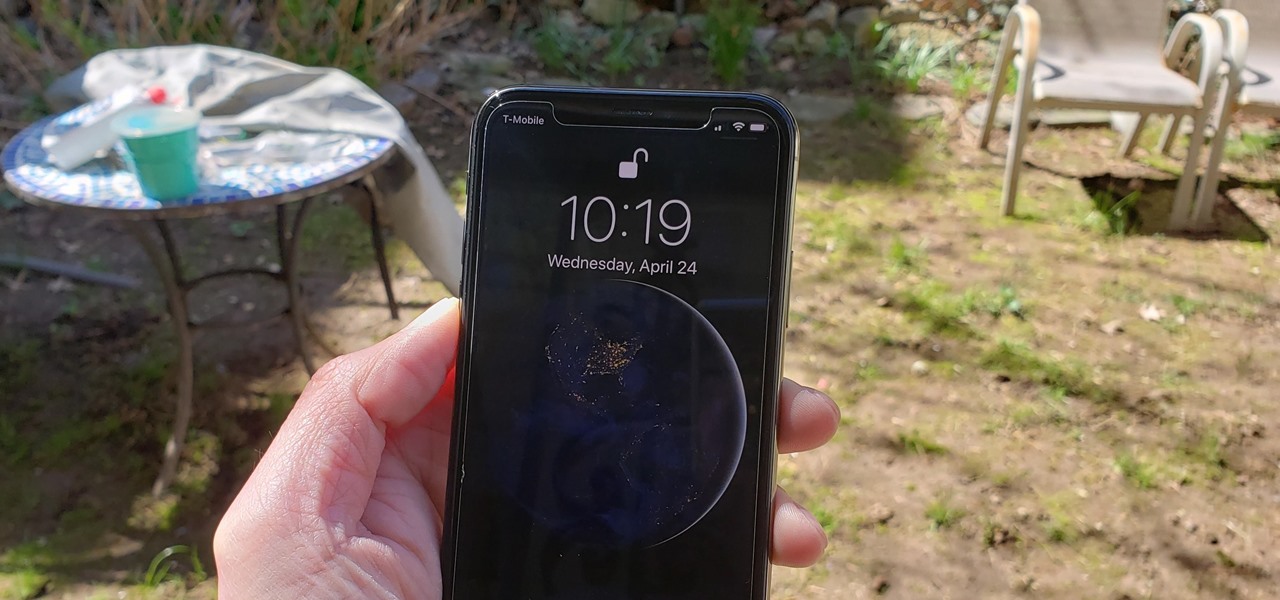Introduction
Welcome to the digital age, where the use of biometric authentication has become increasingly popular. Among the various methods available, Face ID has emerged as one of the most convenient and secure ways to unlock our smartphones and authenticate ourselves for various applications and transactions. However, just like any technology, Face ID is not immune to the occasional hiccup or malfunction.
In this article, we will delve into the reasons why Face ID may not be working properly on your device. Understanding these issues will help you troubleshoot the problem and get your Face ID back up and running smoothly.
Before we jump into the details, let’s take a moment to understand the basics of Face ID and how it works. Apple’s Face ID technology uses a combination of hardware and software to capture and analyze unique facial features, allowing you to unlock your device with just a glance. With advanced facial recognition algorithms and the TrueDepth camera system, Face ID creates a detailed map of your face and compares it with the stored biometric data.
Now that we have a basic understanding of Face ID, let’s explore some common issues that can prevent it from working as expected. From incorrect face recognition to environmental factors affecting its functionality, we will cover the potential challenges and provide troubleshooting tips throughout this article.
The Basics of Face ID
Before we dive into troubleshooting Face ID issues, it’s essential to have a solid grasp on the fundamentals of this biometric authentication system.
Face ID is a feature developed by Apple for its iPhones and iPads equipped with the TrueDepth camera. It uses advanced facial recognition technology to securely authenticate and unlock your device with just a glance.
When you set up Face ID, the TrueDepth camera captures and analyzes your face, creating a unique mathematical representation known as a face print. This face print is stored securely in the device’s secure enclave, a dedicated hardware component that encrypts and protects sensitive information.
Every time you try to unlock your device or authenticate yourself for various applications, the TrueDepth camera captures your face and compares it with the stored face print using complex algorithms. If there is a match, your device will unlock, granting you access to your personal information.
Face ID is designed to adapt and recognize changes in your appearance over time. It can account for variations such as different hairstyles, facial hair, and wearing glasses or sunglasses. Additionally, Face ID is engineered to recognize you even if you’re wearing minimal makeup, in most lighting conditions, and with certain types of face coverings, such as masks.
It’s important to note that Face ID data is securely stored on your device and is not transmitted to Apple’s servers. This approach enhances privacy and ensures that your facial data remains under your control.
Now that we have a solid understanding of how Face ID works, let’s delve into some common issues that can arise with this technology and explore potential solutions to resolve them.
Common Issues with Face ID
While Face ID is a highly advanced and reliable technology, there are instances where users may face difficulties in utilizing its full potential. Let’s explore some common issues that users may encounter:
- Incorrect Face Recognition: One of the primary issues with Face ID is when it fails to recognize your face correctly. This can occur due to various reasons, such as changes in appearance, wearing accessories that obstruct the view of your face, or if you’re not positioned correctly in front of the device.
- Face ID Not Working in Low Light: Face ID relies on the TrueDepth camera’s infrared technology to detect facial features accurately. In low-light conditions, the camera may struggle to capture the necessary data, resulting in Face ID not working as expected. Adequate lighting or adjusting the position of your face can help improve recognition in such situations.
- Face ID Not Working with Glasses or Sunglasses: Wearing glasses or sunglasses may affect Face ID recognition, particularly if the lenses obstruct the view of your eyes. In such cases, try adjusting the position of your glasses or removing them temporarily to allow Face ID to properly scan your face.
- Face ID Not Working with a Face Mask: The COVID-19 pandemic brought about the necessity of face masks, and it can pose a challenge for Face ID. Since masks cover a significant portion of the face, the TrueDepth camera may struggle to recognize your facial features. Apple has introduced a feature that allows you to quickly access the passcode entry screen by swiping up from the bottom of the screen while wearing a mask.
- Dirty or Damaged Sensors: Face ID relies on the TrueDepth camera and sensors to capture and analyze facial data accurately. If the sensors are dirty or damaged, it can impede Face ID functionality. Ensure the camera and sensors are clean, and if there is any visible damage, consider reaching out to Apple support for further assistance.
- Face ID Not Working after Software Updates: Occasionally, software updates can introduce changes that impact Face ID functionality. If you experience issues with Face ID after updating your device, try restarting it, or consider resetting Face ID settings and setting it up again from scratch. This can often resolve any software-related conflicts that may be causing the problem.
By familiarizing ourselves with these common Face ID issues, we are better equipped to troubleshoot and resolve any difficulties that may arise. In the following sections, we will explore specific scenarios and provide tips to help you address and overcome Face ID challenges.
Incorrect Face Recognition
One of the most frustrating issues that users may encounter with Face ID is when it fails to recognize their face correctly. This can happen for various reasons and can be quite frustrating. Here are some possible causes and solutions to address incorrect face recognition:
Changes in Appearance: Face ID relies on the unique features of your face to recognize you. If you have made significant changes to your appearance, such as growing or shaving facial hair, changing hairstyles, or even wearing heavy makeup, it may cause Face ID to have difficulty recognizing your face. To resolve this issue, try resetting Face ID and setting it up again, ensuring that you register your face as it currently appears.
Obstructions or Angle of Your Face: Face ID requires a clear view of your face to accurately authenticate you. If you’re wearing accessories, such as hats, scarves, or goggles that obstruct the view of your face, or if you’re holding your device at an angle, it may prevent Face ID from working correctly. Ensure that your face is unobstructed and that you are holding the device in front of your face, within the device’s recommended viewing angle.
Misalignment during Setup: When setting up Face ID for the first time, it’s important to position your face correctly within the frame to ensure accurate scanning. If you rush through the setup process or don’t align your face properly, it can result in Face ID not recognizing you consistently. In such cases, consider re-enrolling your face in Face ID settings, ensuring that you follow the on-screen instructions carefully and position your face correctly within the frame.
Multiple Registered Faces: If you have registered multiple faces in Face ID settings, it’s possible that the device may detect another registered face instead of yours, leading to incorrect recognition. To address this issue, go to Face ID settings and remove any registered faces that you no longer need or use. This will streamline the recognition process and improve accuracy.
Operating System Updates: Occasionally, system updates can introduce changes to the Face ID algorithm, impacting its performance. If you notice a decline in recognition accuracy after updating your device’s software, consider checking for any available software updates from Apple. Installing the latest updates can often resolve compatibility issues and improve overall Face ID performance.
By troubleshooting these factors, you can enhance the accuracy of Face ID and ensure that it recognizes your face consistently. In the next section, we will address another common issue – Face ID not working in low light conditions.
Face ID Not Working in Low Light
One of the common issues users may experience with Face ID is its difficulty in working properly in low light conditions. Face ID relies on the TrueDepth camera’s infrared technology to capture and analyze your facial features accurately. In low light situations, the camera may struggle to gather the necessary data, leading to Face ID not working as expected. Here are some tips to help address this issue:
Adequate Lighting: Ensure that you are in a well-lit environment when attempting to use Face ID. Natural daylight or indoor lighting that is bright enough can significantly improve the camera’s ability to capture your facial features correctly. If you’re in a dimly lit room, consider moving towards a well-lit area or turning on additional lights nearby to provide better illumination.
Adjust Positioning: When using Face ID in low light, try adjusting the positioning of your face in relation to the device. Make sure your face is well within the frame and that the TrueDepth camera can clearly see your facial features. Hold the device at eye level and ensure that you are looking directly at the camera. This will help the camera capture a clear and accurate image of your face, even in low light conditions.
Reduce Screen Brightness: In low light situations, the brightness of the device’s screen can impact Face ID recognition. If the screen brightness is set too high, it can create a contrast imbalance and make it challenging for the camera to identify your facial features. Try reducing the screen brightness to a comfortable level and see if it improves Face ID’s performance.
Use Assistive Light: If you’re in an extremely low light environment, the device’s screen can act as an assistive light source. Enable the “Attention Aware Features” option in Face ID settings. This will cause the screen to illuminate your face with a soft light when Face ID attempts to authenticate you, providing additional illumination to improve recognition.
Consider Alternate Authentication Methods: If you frequently find yourself in low light environments and Face ID consistently fails to work, you may want to consider using alternate authentication methods. Options such as passcodes or numerical passwords can serve as reliable backups for situations where Face ID may not be functioning optimally.
By implementing these tips, you can increase the chances of Face ID successfully recognizing your face in low light conditions. In the next section, we will address another common issue – Face ID not working with glasses or sunglasses.
Face ID Not Working with Glasses or Sunglasses
One of the challenges that users may encounter with Face ID is when it fails to work properly while wearing glasses or sunglasses. The presence of glasses can sometimes obstruct the view of your eyes, which the TrueDepth camera uses to identify you. Here are some tips to help address this issue:
Adjust the Position of Your Glasses: If you wear glasses and experience difficulties with Face ID, try adjusting the position of your glasses on your face. Make sure they are sitting comfortably on the bridge of your nose and not obstructing your eyes. Sometimes, repositioning the glasses can provide a clearer view of your eyes, enhancing Face ID recognition.
Register Your Face with Glasses On: If you wear glasses regularly, it’s helpful to set up Face ID with your glasses on. When enrolling your face, make sure you wear your glasses as you normally would. This allows Face ID to recognize your face with glasses, improving its accuracy when you’re wearing them.
Remove Sunglasses: Face ID relies on the TrueDepth camera’s ability to see your eyes clearly. If you’re wearing sunglasses with lenses that hinder the camera’s view of your eyes, it may struggle to authenticate you. Consider removing your sunglasses temporarily when using Face ID, especially if they have polarized or mirrored lenses that can obscure your eyes.
Use Transparent or Non-Polarized Glasses: Some types of glasses, such as those with polarized lenses or mirrored coatings, can interfere with Face ID. If possible, use transparent or non-polarized glasses when using Face ID to ensure the camera can accurately capture your facial features.
Register Multiple Appearances: If you wear different types of glasses or frequently switch between glasses and contact lenses, you can register multiple appearances in Face ID settings. This allows Face ID to recognize you with different combinations of eyewear, improving its performance and accuracy.
Consider Clean Glasses: Dirty or smudged lenses can affect Face ID recognition. Regularly clean your glasses to ensure they are free from fingerprints, dirt, or dust. Clear lenses facilitate better visibility of your eyes and can enhance Face ID’s ability to identify you correctly.
By considering these tips, you can help overcome the issues that may arise when using Face ID in conjunction with glasses or sunglasses. In the next section, we will address another common scenario – Face ID not working with a face mask.
Face ID Not Working with a Face Mask
In the face of the COVID-19 pandemic, wearing face masks has become essential for public health and safety. However, it can present a challenge for Face ID authentication since masks cover a significant portion of the face. Here are some tips to help address this issue:
Swipe Up for Passcode Entry: When wearing a face mask, if Face ID fails to recognize your face, you can swipe up from the bottom of the screen to access the passcode entry screen. This allows you to manually enter your device’s passcode for authentication instead of relying on Face ID.
Add an Alternate Appearance: Face ID allows you to add an alternate appearance for situations when you wear a face mask. By setting up Face ID with a portion of your face covered by a mask, it can optimize recognition and improve success rates when wearing a mask.
Reposition the Face Mask: Sometimes, the position of the face mask can inadvertently obstruct crucial facial features that Face ID relies on. Adjusting the mask so that it sits securely and comfortably while leaving your eyes and nose visible can improve Face ID’s ability to authenticate you.
Consider Using a Transparent Face Mask: Transparent face masks are specifically designed to allow for clear visibility of facial features, including the eyes. Using a transparent mask can enhance Face ID recognition while maintaining appropriate safety measures.
Register without a Face Mask: If you primarily wear a face mask in specific environments but go without it in others, consider enrolling your face in Face ID settings without wearing the mask. This can help improve Face ID performance in situations when you’re not wearing a mask.
Keep Face ID Settings Updated: As Apple releases new software updates, they may include improvements to Face ID algorithms that enhance recognition with face masks. Ensure that your device is always running the latest software version to leverage any optimizations and improvements for Face ID performance.
It’s important to note that while Face ID offers convenience and security, it’s essential to follow public health guidelines and wear masks when necessary to protect yourself and those around you. By following these tips, you can navigate the challenge of using Face ID while wearing a face mask more effectively.
In the next section, we will address another common issue – dirty or damaged Face ID sensors.
Dirty or Damaged Sensors
Face ID relies on the sensors and cameras on your device to accurately capture and analyze your facial features. If these sensors are dirty or damaged, it can impact the functionality of Face ID. Here are some tips to address issues related to dirty or damaged sensors:
Clean the Camera and Sensors: Over time, dust, fingerprints, or other debris can accumulate on the camera and sensors used for Face ID. Use a microfiber cloth or an appropriate lens cleaning solution to gently clean the camera and sensors. Avoid using harsh chemicals or abrasive materials that could potentially damage the device.
Remove the Case: If you use a protective case on your device, it’s possible that the case may be obstructing the sensors or covering the camera. Remove the case temporarily and see if Face ID functions properly. If it does, consider using a different case or ensuring that the existing case doesn’t interfere with the sensors.
Check for Physical Damage: Examine the device for any visible signs of physical damage. Any cracks or breaks in the camera or sensor area can impair Face ID performance. If you notice any damage, consider reaching out to Apple Support or an authorized service provider for further assistance and potential repairs.
Restart the Device: Sometimes, a simple restart can resolve temporary glitches or software conflicts that may affect Face ID functionality. Restart your device by powering it off, then turning it back on, and check if Face ID works correctly after the restart.
Reset Face ID Settings: If you continue to experience problems with Face ID, you can try resetting Face ID settings and setting it up again from scratch. Go to the device settings, find Face ID & Passcode, and choose the option to reset Face ID. Follow the instructions to set it up again and see if the issue is resolved.
Contact Apple Support: If you have tried the above steps and Face ID still does not work properly or if you suspect there may be a hardware issue, it’s recommended to contact Apple Support or visit an authorized service provider. They will be able to provide specialized assistance and guidance tailored to your specific device model and situation.
By addressing dirty or damaged sensors, you can help ensure the optimal functioning of Face ID. In the next section, we will discuss Face ID issues that may arise after software updates.
Face ID Not Working after Software Updates
Occasionally, after installing software updates on your device, Face ID may encounter compatibility issues or experience temporary glitches. If you find that Face ID is not working properly after a software update, here are some steps you can take to resolve the issue:
Restart Your Device: A simple restart can often help resolve any temporary software conflicts that may be affecting Face ID. Power off your device and then turn it back on. This can refresh the system and potentially resolve the issue.
Check for Software Updates: Make sure that your device is running the latest software version. Apple frequently releases updates that address bugs and improve the performance of features like Face ID. Go to your device’s settings, navigate to “General,” and check for any available software updates. Install any updates that are available and see if the Face ID issue persists.
Reset Face ID Settings: If Face ID continues to malfunction after a software update, resetting the Face ID settings may help. Go to the device settings, find “Face ID & Passcode,” and choose the option to reset Face ID. Set it up again following the prompts, and test whether Face ID is now working as expected.
Reset All Settings: If the previous steps do not resolve the issue, you can try resetting all settings on your device. This will revert all settings back to their default values without erasing your data. Go to the device settings, select “General,” then “Reset,” and choose “Reset All Settings.” Note that this action will remove any personalized settings and preferences, so you will need to set them up again.
Contact Apple Support: If the problem persists after trying the above steps, it may be necessary to reach out to Apple Support for further assistance. They have specialized knowledge and resources to help diagnose and address any underlying software issues related to Face ID after a software update.
It’s worth noting that software updates are designed to improve the overall performance and security of your device, including features like Face ID. However, occasional issues may arise as the operating system evolves. By following these troubleshooting steps and seeking additional support when needed, you can ensure that Face ID functions properly even after software updates.
In the next sections, we will address other specific scenarios where Face ID may encounter issues, such as unlocking problems and authentication difficulties in apps.
Unlocking Issues with Face ID
Face ID is primarily designed to provide a seamless and secure way to unlock your device with just a glance. However, there can be instances where users may encounter unlocking issues. Let’s explore some common scenarios and potential solutions:
Attention Awareness Features: Face ID requires your attention to be directed towards the device for successful authentication. If you’re not making eye contact with the device or if your attention is focused elsewhere, Face ID may not work. Ensure that you are looking directly at the device when attempting to unlock it.
Restart or Force Restart: In cases where Face ID is consistently failing to unlock your device, performing a restart or force restart can sometimes resolve the issue. Restart your device by powering it off and then turning it back on. If a restart doesn’t work, try a force restart by quickly pressing and releasing the Volume Up button, then quickly pressing and releasing the Volume Down button, and finally, pressing and holding the Side or Power button until the Apple logo appears.
Check Face ID Settings and Re-enroll: Verify that Face ID is enabled in your device’s settings. Additionally, check if attention awareness is enabled and ensure that your registered face appears in the Face ID settings. If you suspect an issue with the existing Face ID data, you can re-enroll your face by removing the existing face data in the settings and setting it up again from scratch.
Sudden Changes in Appearance: If there have been abrupt changes in your appearance, such as significant weight loss or gain, or if you have undergone facial surgery, it can impact Face ID recognition. In such cases, it may be necessary to reset Face ID settings and set it up again, capturing your updated facial features.
Face ID Not Working for Several Users: Face ID is designed to recognize one user’s face at a time. If multiple people are trying to unlock the same device using Face ID, it may cause unlocking issues. Make sure only one registered face is set up for Face ID on the device. If multiple users need access, consider using passcodes or setting up separate user accounts on the device.
Consult Apple Support: If none of the above solutions resolve the unlocking issues with Face ID, it is advisable to contact Apple Support or visit an authorized service provider for further assistance. They have the expertise to diagnose and address specific issues that may be affecting Face ID on your device.
By troubleshooting these common scenarios, you can effectively resolve unlocking issues with Face ID and experience a smoother authentication process. In the next section, we will address issues related to Face ID authentication within apps.
Face ID Not Working for Authentication in Apps
Face ID not working for authentication within apps can be a frustrating experience, especially when trying to access sensitive information or perform important tasks. Here are some possible reasons and solutions for Face ID authentication issues in apps:
App-Specific Settings: Some apps may have their own settings for biometric authentication, including Face ID. Verify that the app you are trying to authenticate with has Face ID enabled within its settings, and ensure that you have granted the necessary permissions for Face ID to be used for authentication within that particular app.
Update the App: Outdated versions of apps may have compatibility issues with newer versions of iOS, leading to Face ID authentication problems. Check the App Store for any available updates to the app you are experiencing issues with, and install the latest version. Updating the app may fix any bugs or conflicts affecting Face ID authentication.
Reinstall the App: If updating the app did not resolve the Face ID authentication issue, try uninstalling and reinstalling the app. This process can help refresh the app’s settings and dependencies, potentially resolving any glitches or conflicts related to Face ID authentication.
Reset Face ID Usage: In some cases, Face ID may not be working for a specific app due to corrupted or conflicting data. Go to the device’s settings, find “Face ID & Passcode,” and scroll down to the “Other Apps” section. Tap on the app that is causing the issue and select “Reset Face ID Usage.” This action will remove any stored Face ID data for that particular app. Try setting up Face ID authentication for the app again and see if it resolves the issue.
Temporary Server Issues: In some instances, the problem may not be with your device or Face ID itself but with the app’s servers or backend. If multiple users are reporting the same Face ID authentication issue with a specific app, it’s possible that there is a temporary server problem. Contact the app’s support team or wait for the issue to be resolved from the developer’s end.
Contact App Developer: If the issue persists and none of the above solutions work, it is advisable to reach out to the app’s developer or support team directly. They will have more specific knowledge and resources to assist you with the Face ID authentication problem in their app.
By following these solutions, you can troubleshoot and resolve Face ID authentication issues within apps, ensuring smoother and secure access to your desired applications. In the next section, we will address security concerns related to Face ID.
Security Concerns with Face ID
While Face ID offers convenience and enhanced security, there are some security concerns that users may have. It’s important to address these concerns and understand the measures in place to protect your privacy and data:
Biometric Data Storage: Some users may worry about the storage and security of their biometric data used for Face ID. Apple has implemented a secure enclave, a dedicated hardware component within the device’s processor, to store and protect this sensitive information. The data is encrypted and cannot be accessed by other applications or transferred to Apple’s servers, ensuring the privacy of your facial data.
Attention to Detail: Face ID utilizes attention-aware features, requiring users to actively look at the device for authentication. This mechanism helps prevent unauthorized access in situations where someone might attempt to unlock the device using a photograph or image. The level of detail and analysis in Face ID enhances security and reduces the risk of false positives.
No Backdoors: Apple has stated that no backdoors exist within Face ID or the secure enclave. This means that even Apple cannot access your biometric data or bypass the security measures to compromise your privacy. Face ID’s protections are designed to be robust, ensuring that your data remains secure and under your control.
Temporary Mask Use: In response to the COVID-19 pandemic, Apple introduced a feature that allows users to quickly access the passcode entry screen when wearing a face mask. This ensures that even when Face ID may be hindered by a mask, the security of your device remains intact, emphasizing the importance of maintaining confidentiality and privacy.
Two-Factor Authentication (2FA): To further enhance the security of your device and accounts, it is recommended to enable two-factor authentication whenever possible. This additional layer of protection requires users to provide a second form of verification, such as a passcode or biometric authentication, in addition to Face ID, strengthening the overall security of your digital presence.
Secure Communication: When using Face ID for authentication within apps or services, data transmission is securely encrypted to protect the communication between your device and the app’s servers. This ensures that your biometric data is transmitted safely, reducing the risk of interception or unauthorized access.
It’s important to note that while Face ID offers advanced security features, no security system is entirely infallible. As with any biometric technology, it is possible, though unlikely, for Face ID to be fooled by certain methods such as high-quality 3D models of your face. However, the chances of such a scenario occurring are extremely low.
By acknowledging and understanding the security measures in place with Face ID, you can feel confident in its ability to protect your data and privacy. In the final section, we will provide some troubleshooting tips to help address Face ID issues effectively.
How to Troubleshoot Face ID Issues
Facing issues with Face ID can be frustrating, but there are troubleshooting steps you can take to resolve common problems. Here are some tips to help you troubleshoot Face ID issues effectively:
Ensure Face ID is Enabled: Confirm that Face ID is enabled in your device’s settings. Go to “Face ID & Passcode” and make sure the toggle switch is turned on for Face ID. If it’s already enabled, toggle it off and on again to refresh the settings.
Check for Updates: Make sure your device is running the latest software version. Check if any software updates are available in the device settings, and install them if necessary. Updates often include fixes and improvements that can address Face ID issues.
Remove and Re-Enroll Your Face: If Face ID is still not working, consider removing your face data from the Face ID settings and re-enrolling it. Go to the Face ID settings, select the option to remove your face data, and follow the instructions to set it up again from scratch.
Reposition Your Face: Ensure that your face is positioned correctly in front of the device when using Face ID. Hold the device so that the TrueDepth camera has a clear view of your face, and make sure to look directly at the camera. Adjust your positioning if necessary to improve Face ID recognition.
Reset Face ID Settings: If all else fails, you can reset the Face ID settings entirely. This will remove all registered face data and configurations. Go to the Face ID settings, select the option to reset Face ID, and follow the prompts to set it up again.
Contact Apple Support: If you have exhausted all troubleshooting options and Face ID still isn’t working properly, it may be necessary to reach out to Apple Support or visit an authorized service provider. They can provide personalized assistance and guidance to address the specific Face ID issue you are experiencing.
Remember, each troubleshooting step should be approached systematically, and it’s important to give each solution a reasonable chance before moving on to the next. Patience and persistence can often lead to a successful resolution of Face ID issues.
By following these troubleshooting tips, you can increase the chances of effectively addressing Face ID problems and restoring its functionality. Face ID is a robust and secure biometric authentication system, and with the right troubleshooting steps, you can enjoy its benefits seamlessly.
Conclusion
Face ID is an innovative biometric authentication technology that provides convenience and enhanced security for unlocking devices and accessing various applications. However, it’s not uncommon to encounter issues that prevent Face ID from working as expected. From incorrect face recognition to challenges with low-light conditions, glasses or sunglasses, face masks, dirty or damaged sensors, and software updates, there are several factors that can affect Face ID’s functionality.
Fortunately, many of these issues can be resolved through troubleshooting. By following the tips and solutions provided in this article, you can troubleshoot and address Face ID problems effectively. Whether it’s adjusting your positioning, re-enrolling your face, or resetting Face ID settings, there are steps you can take to improve recognition and ensure a smooth authentication experience.
It’s important to remember that Face ID prioritizes privacy and security. With measures such as the secure enclave and attention-aware features, Apple has implemented safeguards to protect your biometric data and ensure that the authentication process is reliable and accurate.
If you continue to experience persistent issues with Face ID, reaching out to Apple Support or an authorized service provider can provide expert assistance tailored to your specific device and circumstances.
Face ID is constantly evolving, and future updates and advancements will likely address any challenges or limitations experienced by users. Keeping your device updated with the latest software releases will help ensure that you benefit from the most optimized version of Face ID.
As technology continues to advance, it is essential to stay informed and adapt to the changes. By familiarizing yourself with common Face ID issues, troubleshooting techniques, and security measures, you can maximize the potential of Face ID and enjoy a seamless and secure digital experience.







